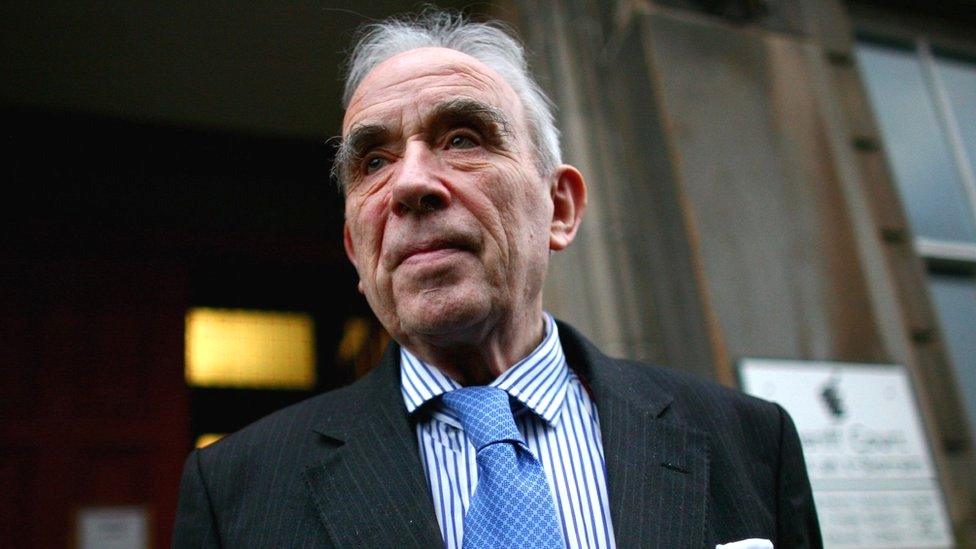My dad wouldn't want Stone of Destiny at Coronation
- Published
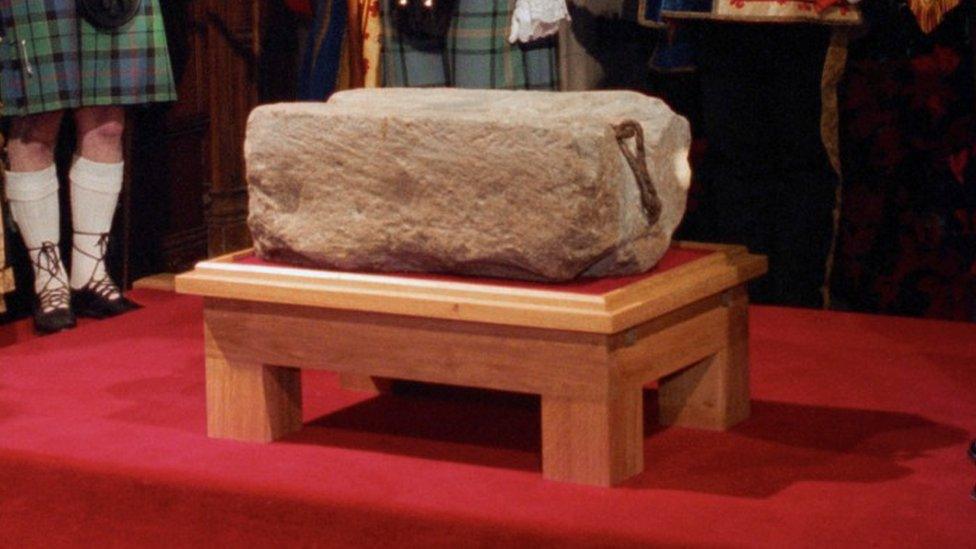
The Stone of Destiny was originally used during the coronation of Scottish kings
The son of the man who removed the Stone of Destiny from Westminster Abbey and smuggled it back to Scotland says his father would be against it returning for the King's Coronation.
Ian Hamilton, who died last year, was a student when he broke into the abbey and took the stone in 1950.
His son Jamie said his father would not want the stone to go to London for the crowning of King Charles in May.
"I think his view would be it's ridiculous," he said.
The Stone of Destiny is seen as a historic symbol of Scotland's monarchy.
It was used in the inauguration of Scottish kings for centuries but was seized by England's King Edward I in 1296 and built into a coronation throne at Westminster Abbey.
In 1950, Mr Hamilton and three other students from Glasgow carried out an audacious heist in order to make a bold statement about Scottish nationalism.
They broke into the abbey and whisked away the 150kg (336lb) red sandstone block, accidentally splitting it in two in the process.
It was found months later, 500 miles away, at the high altar of Arbroath Abbey.
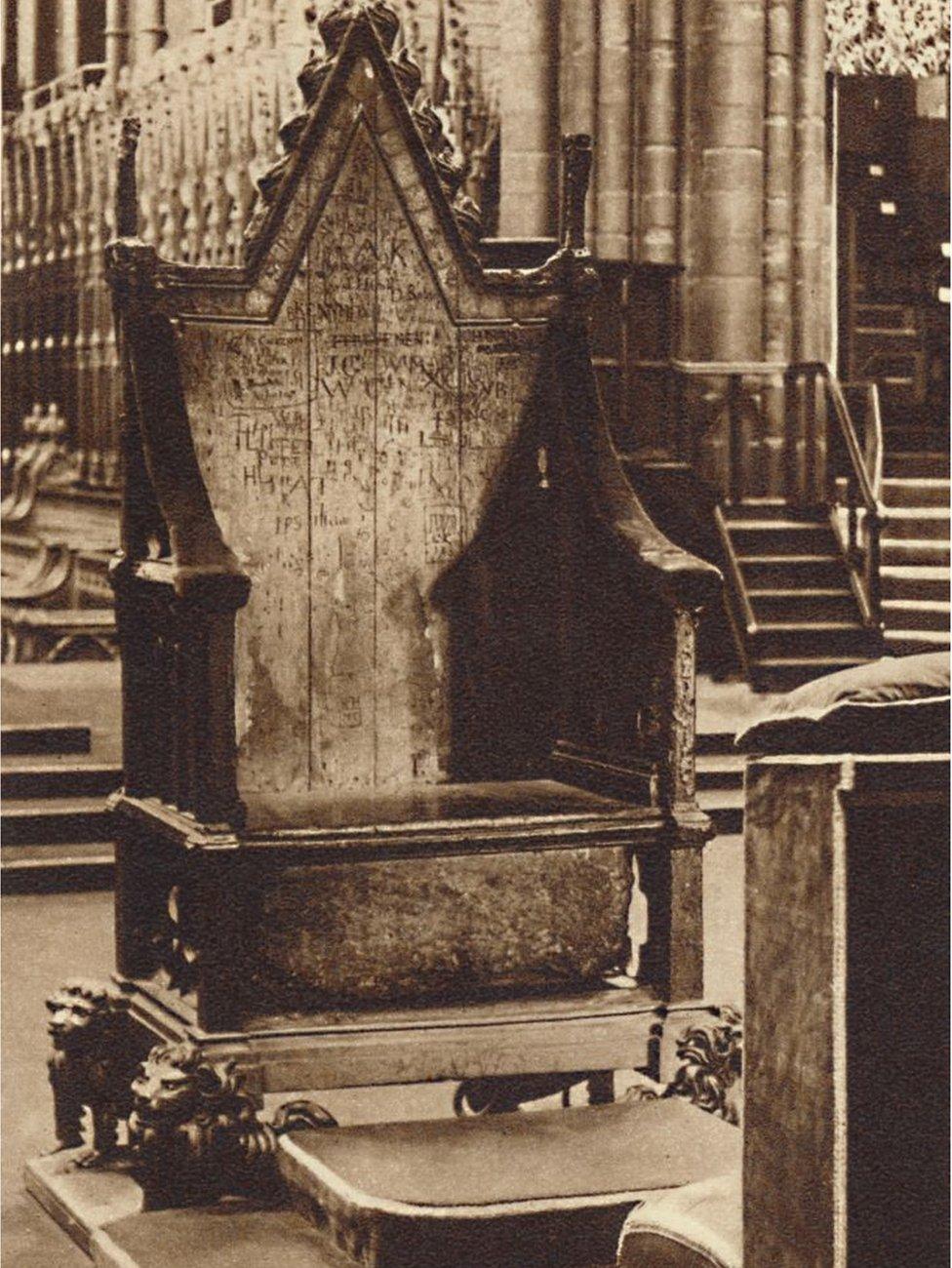
This picture shows the Coronation Chair and the Stone of Destiny in 1937
The stone was taken back to Westminster Abbey and was used in the coronation of Queen Elizabeth in 1953.
It remained in London until it was agreed that it would be legally moved to Edinburgh Castle in 1996.
It now lies alongside the crown jewels of Scotland in the castle's Crown Room but will be temporarily taken to London to be used in the coronation ceremony for King Charles III in May.
Mr Hamilton's son Jamie, 62, said his father would have said the stone should rest in Scotland.
He said: "If people want to be crowned on it they should come to Scotland and be crowned on it. I think that would be his standpoint."
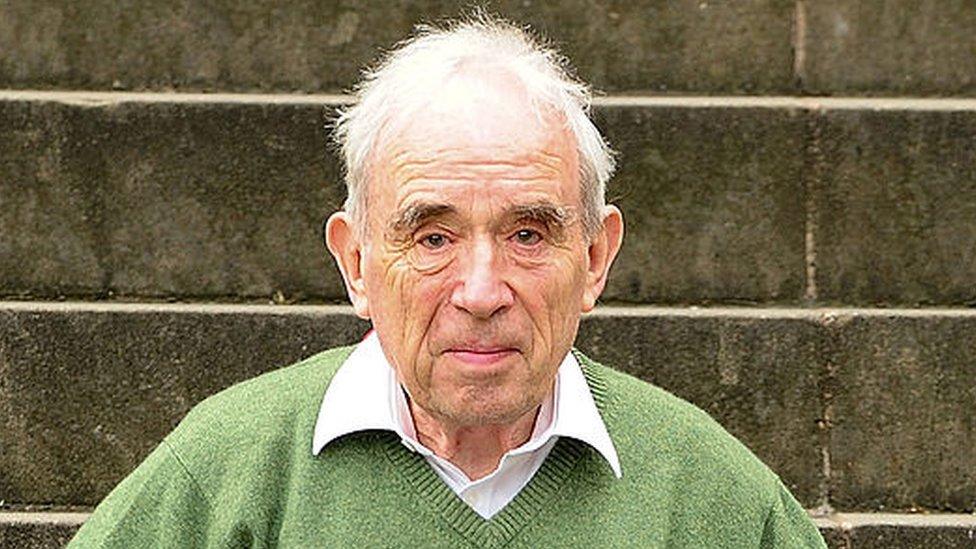
Ian Hamilton died last year at the age of 97
The ancient stone was damaged when the students dragged it from the abbey in 1950.
Mr Hamilton's son Jamie told the BBC he had a fragment of the red sandstone in a piece of jewellery his father gave to his mother.
He said his father did not really sit down and explain to his children what he had done.
"I think it was something that we just gathered over time and made up our own story," he said.
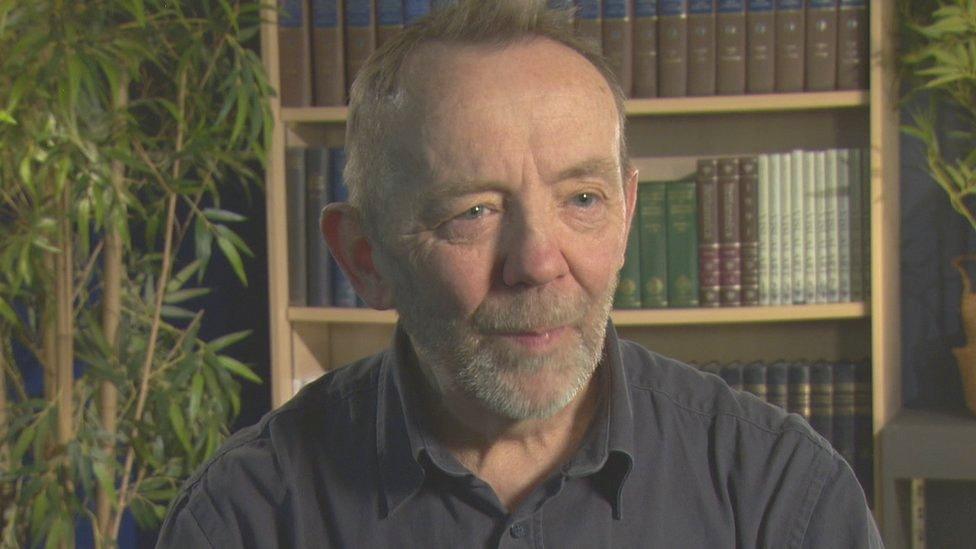
Jamie Hamilton said his dad would think the idea was ridiculous
Kathy Richmond, the head of collections at Historic Environment Scotland, said that when the stone was legally returned to Scotland in 1996 it was agreed it would still be used to crown the monarch.
"We have a royal warrant which says that the stone is to be kept in Scotland and it's to be transported back to Westminster abbey for any future coronation," she said.
Dr Lucy Dean, from the University of the Highlands and Islands, said it was important the stone was used in the new ceremony because it had such a rich heritage.
"It's a symbol of royal power but it's also a symbol of nationhood and identity for both Scotland and the British Isles," she said.
"In Scotland it was used in inaugurations up to the 13th Century when it was taken from Scotland to England by Edward I and it was taken as a prize essentially.
"But during that time in England, it gained new meaning."
Plans are now being made for the return - with the guarantee it comes back to Scotland after the coronation.
- Published12 September 2022
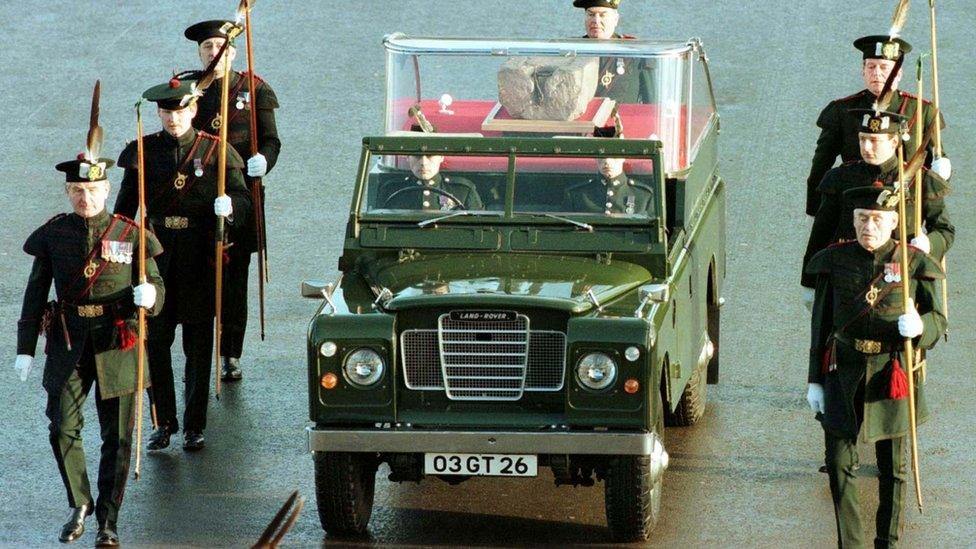
- Published24 March 2023
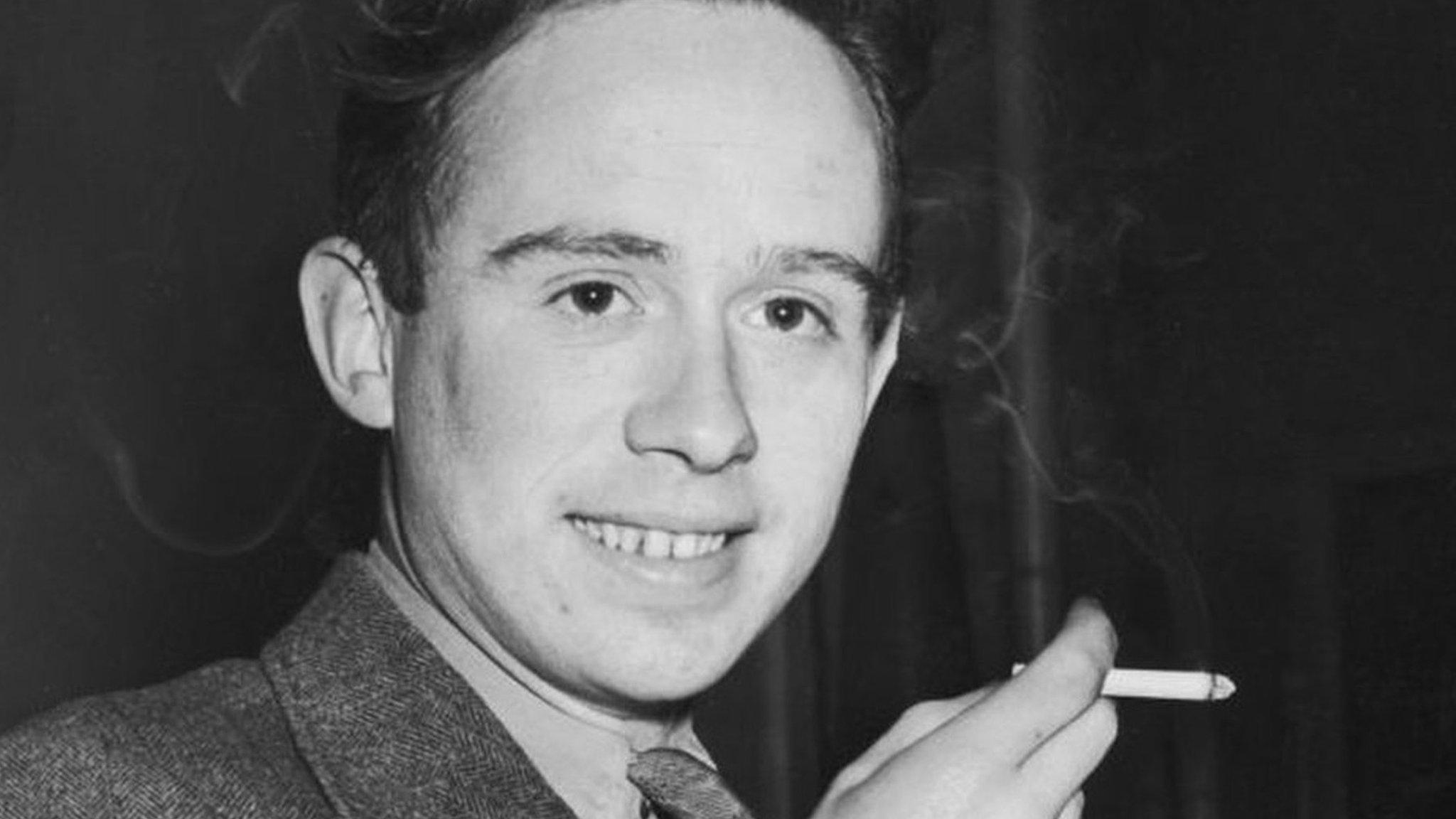
- Published4 October 2022
